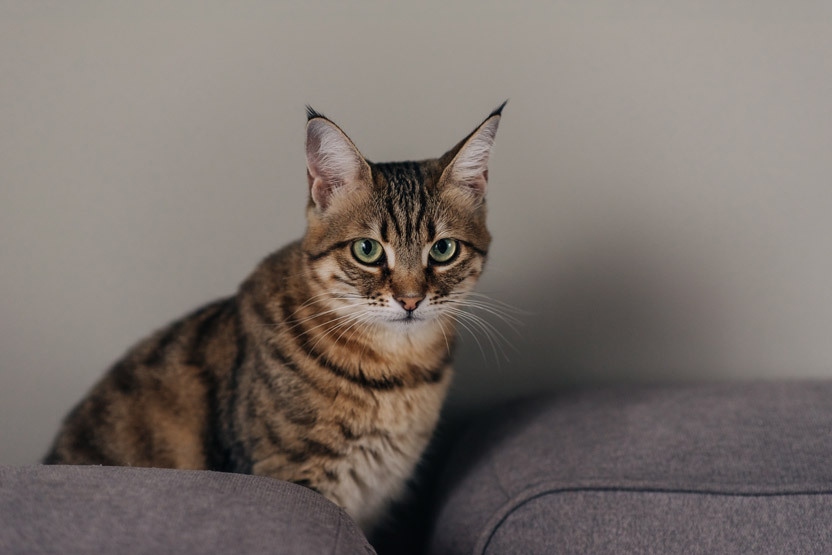
Debunking Myths About Cats: What’s Fact and What’s Fiction?
Cats have long been the subjects of myths and misconceptions, often shaping how people perceive and interact with them. From their supposed aloofness to the idea that they always land on their feet, this guide explores common cat myths and uncovers the truth behind them, helping cat owners better understand their feline friends.
🐶 Pet Star
13 min read · 22, Jan 2025

1. Myth: Cats Are Aloof and Unaffectionate
The Myth:
Cats are often stereotyped as solitary and emotionally detached pets.
The Fact:
While cats may exhibit independence, they form strong bonds with their owners. Cats show affection through purring, head-butting, kneading, and following their humans around. Their subtle ways of expressing love can be misunderstood as aloofness.
Why the Myth Persists:
Cats’ independent nature contrasts with the overt displays of affection seen in dogs, leading to a perception that they are less loving.
2. Myth: Cats Always Land on Their Feet
The Myth:
Cats possess a natural ability to land on their feet no matter how they fall.
The Fact:
Cats have a remarkable righting reflex that helps them twist their bodies mid-air to land on their feet. However, this isn’t foolproof, especially from low heights where they don’t have enough time to adjust. Falls can still result in injuries.
Why the Myth Persists:
This ability is extraordinary and has been observed in many situations, creating the impression of invincibility.
3. Myth: Cats Can See in Complete Darkness
The Myth:
Cats are often believed to have perfect night vision, allowing them to see in pitch-black environments.
The Fact:
Cats have excellent low-light vision due to a higher number of rod cells in their eyes. However, they cannot see in total darkness and require some light to navigate.
Why the Myth Persists:
Their ability to move gracefully in dim conditions contributes to the idea that they possess supernatural sight.
4. Myth: Cats Hate Water
The Myth:
All cats despise water and will avoid it at all costs.
The Fact:
While many cats dislike getting wet due to their fur’s water-absorbent properties, some breeds, like the Turkish Van, enjoy water. Individual cats may also develop a liking for water depending on their experiences.
Why the Myth Persists:
Cats’ cautious behavior around water is often generalized, overshadowing exceptions to the rule.
5. Myth: Cats Are Nocturnal
The Myth:
Cats are exclusively active at night and sleep all day.
The Fact:
Cats are crepuscular, meaning they are most active during dawn and dusk. Their behavior is influenced by their hunting instincts, which are suited to these times.
Why the Myth Persists:
Cats’ bursts of energy at night often create the impression that they are nocturnal.
6. Myth: Pregnant Women Should Avoid Cats
The Myth:
Cats pose a significant risk to pregnant women due to the danger of contracting toxoplasmosis.
The Fact:
Toxoplasmosis is a concern, but it’s primarily spread through contaminated soil, undercooked meat, or cat feces. Pregnant women can safely coexist with cats by practicing good hygiene and avoiding litter box cleaning.
Why the Myth Persists:
A lack of understanding about toxoplasmosis transmission has perpetuated this misconception.
7. Myth: Cats Are Low-Maintenance Pets
The Myth:
Cats require minimal care compared to other pets.
The Fact:
While cats are generally more independent than dogs, they still need regular veterinary care, grooming, mental stimulation, and affection. Neglecting these aspects can lead to health and behavioral issues.
Why the Myth Persists:
Cats’ ability to self-groom and entertain themselves can give the impression that they don’t need much attention.
8. Myth: Cats Are Bad for Babies
The Myth:
Cats pose a danger to babies by “stealing their breath” or smothering them.
The Fact:
This myth has no basis in reality. Cats may be curious about a baby’s crib but are unlikely to harm them. Proper supervision ensures a safe coexistence.
Why the Myth Persists:
Old wives’ tales and fear of the unknown contribute to this persistent myth.
9. Myth: Black Cats Are Bad Luck
The Myth:
Black cats are harbingers of bad luck and misfortune.
The Fact:
Black cats have been associated with superstition for centuries, but they are no different from cats of other colors. In some cultures, they are even considered symbols of good luck.
Why the Myth Persists:
Historical associations with witchcraft and folklore have perpetuated this unfounded belief.
Q1: Why do cats knead with their paws?
Ans) Kneading is a comforting behavior that cats develop as kittens when nursing. It’s a sign of contentment and affection in adult cats.
Q2: Can cats really sense human emotions?
Ans) Yes, cats are sensitive to their owners’ emotions and can respond to changes in tone, body language, and mood.
Q3: Do cats get lonely?
Ans) While cats are independent, they can experience loneliness, especially if left alone for extended periods. Providing companionship and stimulation can help.
Q4: Is it true that cats can’t taste sweetness?
Ans) Yes, cats lack taste receptors for sweetness, which is why sugary treats don’t appeal to them.
Q5: Why do cats bring dead animals to their owners?
Ans) This behavior is rooted in their hunting instincts. Cats may see their owners as part of their “clan” and bring prey as a form of sharing or teaching.
Similar Articles
Find more relatable content in similar Articles
Explore Other Categories
© 2024 Copyrights by rPets. All Rights Reserved.